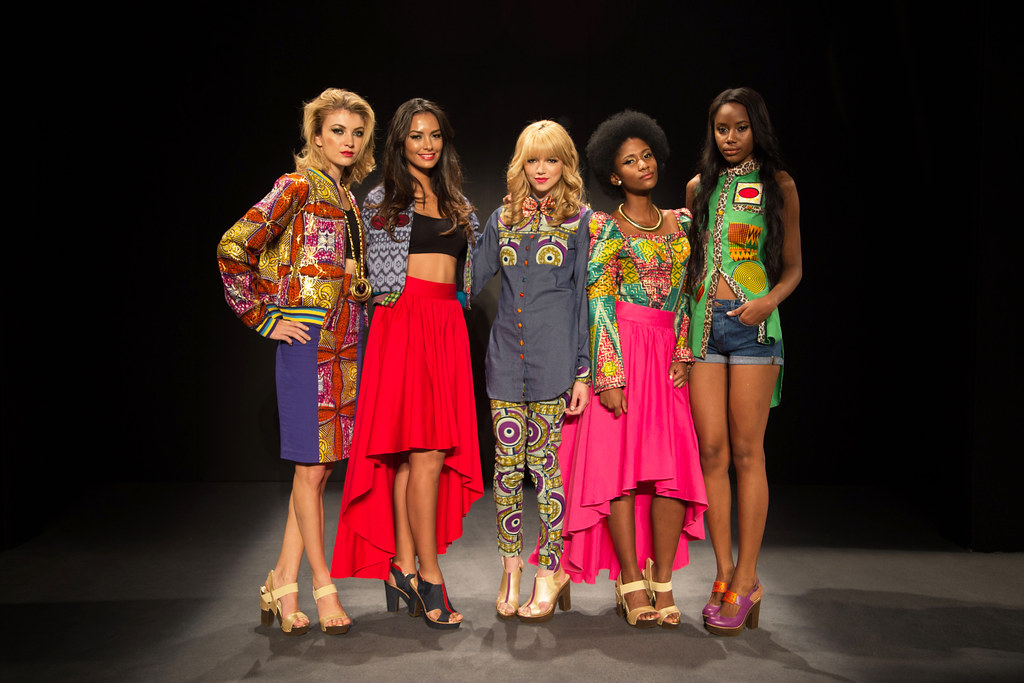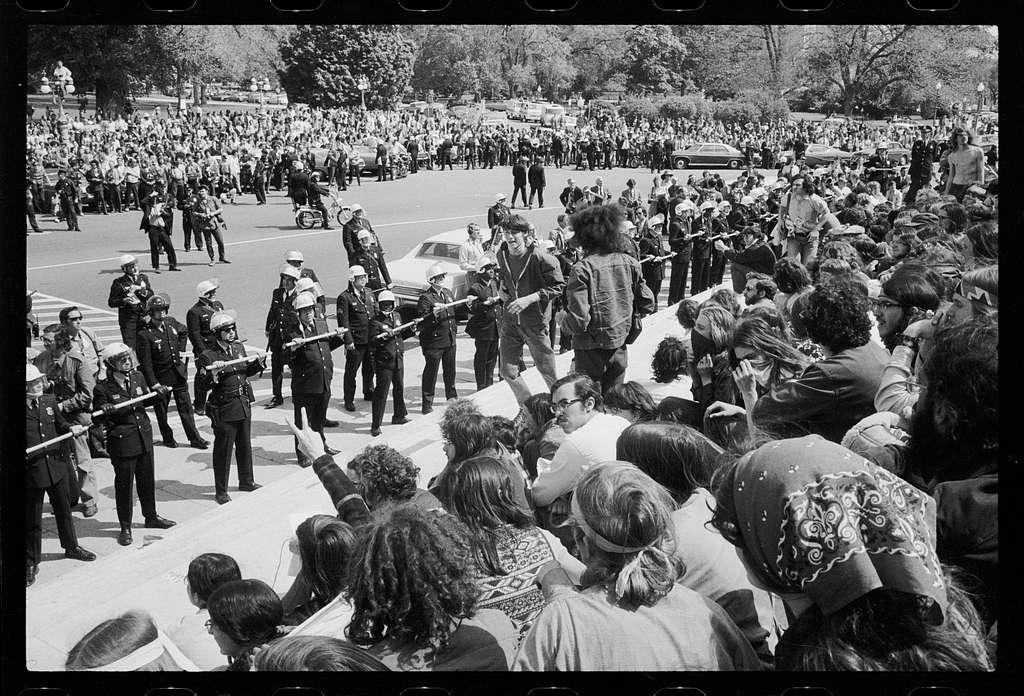In a world where fashion is a language spoken by millions, streetwear stands as the prolific rebel, breaking barriers and defying convention. What began as a subculture rooted in the gritty city streets has now catapulted into the dazzling realm of mainstream fashion, captivating the hearts and wardrobes of individuals from all walks of life. The evolution of streetwear is an intriguing tale of style’s metamorphosis, a journey from the underground to the forefront of global fashion consciousness. With its vivid colors, bold graphics, and a distinct urban edge, this sartorial movement has transcended mere clothing, becoming an emblem of self-expression and a melting pot of cultural influences. Join us as we embark on a captivating exploration of the fascinating metamorphosis that has enabled streetwear to cement its place in the ever-changing tapestry of fashion history.
From Counterculture to High Fashion: How Streetwear Has Transformed the Fashion Industry
In the ever-evolving realm of fashion, one trend has managed to transcend boundaries and reshape the industry like no other – streetwear. What was once rooted in counterculture has now become a leading force in the world of high fashion, captivating audiences worldwide and transforming the way we perceive style.
Streetwear’s journey from subculture to mainstream has been nothing short of remarkable. Its humble origins can be traced back to the underground music scenes and urban communities of the 1970s and 80s, where rebellious youngsters sought to express their individuality through distinctive clothing choices.
- Initially birthed in the skateboarding scene, streetwear adopted a DIY aesthetic and aversion to mainstream fashion norms.
- The Hip-Hop culture of the 1990s served as a catalyst for streetwear’s rise, with artists like Run-DMC and their iconic adidas tracksuits becoming synonymous with the movement.
- As the new millennium dawned, high-profile collaborations between luxury brands and streetwear labels began to blur the lines between subculture and high fashion, ushering in a new era of fashion inclusivity.
Today, streetwear has firmly cemented its place in the fashion pantheon. What was once considered a niche style has captivated the hearts of designers, celebrities, and fashion enthusiasts alike. The allure lies in its ability to blend elements of comfort, utility, and unapologetic self-expression, resonating with a wide array of audiences regardless of age, gender, or social status.
From the runways of Paris to the shelves of high-end boutiques, streetwear’s influence can now be seen in the collections of renowned fashion houses, with collaborations between Supreme and Louis Vuitton or Off-White and Nike becoming the epitome of cool. As streetwear continues to push boundaries, it redefines what it means to be fashionable, blurring the lines between luxury and casual, challenging traditional norms, and shaping the future of the fashion industry.

The Influence of Celebrity Culture: From Runway to Red Carpet, Streetwear Rules
Streetwear, once an underground subculture, has emerged as a dominant force in the world of fashion. With its roots traced back to the urban streets and skate parks, streetwear has undergone a remarkable evolution, breaking free from its niche origins and infiltrating the mainstream fashion scene. Today, it dominates not just the runways, but also the red carpets across the globe, proving that the influence of this unique style knows no boundaries.
What sets streetwear apart is its ability to effortlessly blend comfort, style, and self-expression. From graphic tees and hoodies to sneakers and baggy jeans, the streetwear aesthetic caters to both the fashion-forward and those seeking a more laid-back yet fashionable attire. Its increasing popularity can be attributed to its ability to resonate with diverse communities and connect people through a shared love for urban culture. High-end fashion brands have taken notice, collaborating with streetwear icons and infusing their designs with elements of this subculture. The result? A fusion of high fashion and street style that continuously pushes the boundaries of the fashion industry.
- Streetwear’s influence extends beyond clothing, infiltrating the worlds of music, art, and entertainment.
- Artists and musicians often adopt streetwear as a form of self-expression, using their attire to communicate their unique personalities and connect with their fans.
- The rise of social media platforms has further propelled the streetwear movement, creating a space for streetwear enthusiasts to showcase their style and connect with like-minded individuals.
Streetwear’s journey from subculture to mainstream has been a testament to its enduring appeal and ability to adapt. As the lines between high fashion and street style continue to blur, one thing is clear – streetwear is here to stay, influencing and shaping the fashion landscape for years to come.

Collaborations and Limited Editions: Maximizing Success and Scarcity in Streetwear
Collaborations and limited editions have become integral to the success and appeal of streetwear. These unique partnerships between brands, designers, and even artists have taken streetwear from its subcultural roots to the forefront of mainstream fashion. By teaming up with other influential figures or releasing limited quantities of exclusive merchandise, streetwear brands have created a sense of scarcity and desirability that drives their success.
One of the key strategies employed in these collaborations is the fusion of different aesthetics and styles. By bringing together the distinct visions of multiple creative minds, streetwear brands are able to create something truly unique and appealing to a wider audience. Whether it’s the collaboration between a high-end luxury brand and a streetwear label or a partnership between established designers and up-and-coming artists, these collaborations allow for cross-pollination of ideas and styles, pushing the boundaries of streetwear and constantly reinventing the culture.

Embracing Sustainability: The Next Chapter in Streetwear’s Evolution
Streetwear has undoubtedly come a long way since its humble beginnings as a subculture fashion movement. What started as a form of self-expression for urban youth has now firmly established itself as a powerful force in mainstream fashion. But as streetwear continues to evolve, a new chapter is being written: the integration of sustainability.
In an industry known for its fast-paced trends and disposable garments, streetwear is no stranger to its environmental impact. However, the rise of conscious consumers and the growing awareness of climate change have pushed streetwear brands to rethink their practices. Embracing sustainability means reimagining every aspect of the streetwear industry, from sourcing materials to manufacturing processes and even packaging.
- Materials: Streetwear brands are exploring eco-friendly fabrics like organic cotton, hemp, and recycled fibers to reduce their carbon footprint.
- Manufacturing: Embracing sustainable practices means adopting fair-trade production, supporting ethical labor practices, and minimizing waste during the manufacturing process.
- Design: Streetwear is known for its bold designs, but sustainable streetwear brands are incorporating elements of longevity in their designs, creating garments that are timeless and durable.
As streetwear continues to shape the fashion industry, acknowledging its impact on the environment is crucial. By embracing sustainability, streetwear’s next chapter promises a future where fashion is both stylish and responsible.
In Retrospect
As we delve into the fascinating journey through the evolution of streetwear, one thing becomes abundantly clear: what was once a rebellious subculture has now firmly cemented its place in the mainstream fashion lexicon. From the gritty streets of underground scenes to the catwalks of high-end fashion houses, streetwear has undergone a remarkable transformation, captivating both the young and the young-at-heart.
The seismic shift in the perception of streetwear can be attributed to its ability to break away from traditional fashion norms. What was once dismissed as a mere manifestation of counterculture has now become a powerful force that unites people from diverse backgrounds. Streetwear, with its emphasis on self-expression and individuality, has allowed countless individuals to find their voice amidst a sea of trends and expectations.
In its earliest days, streetwear was an exclusive club, with tight-knit communities forming around their shared passion for unique style. However, as the influence of technology and social media grew, so did the accessibility and visibility of streetwear. Suddenly, the distinctive designs and bold graphics that were once confined to inner-city neighborhoods began to permeate every corner of the globe.
Today, we find ourselves in a world where luxury fashion powerhouses collaborate with streetwear icons, blurring the lines between high and low culture. The once-unthinkable fusion of high fashion and streetwear has captivated both industry insiders and fashion enthusiasts alike. It is a testament to the resilience and adaptability of streetwear, proving that the subculture it once represented has grown into a movement that refuses to be confined to any one definition.
But with this evolution comes the ever-persistent question: has streetwear lost its essence? As it becomes increasingly assimilated into the mainstream, some argue that it has become diluted, losing the very roots that made it so compelling. Yet, despite these debates, streetwear persists in its ability to carve out new paths, constantly challenging the conventions of the fashion world.
There is an undeniable allure to streetwear that extends beyond its garments; it is an entire philosophy, an attitude that champions individuality and self-expression. It embodies a spirit that resonates with the rebellious, the non-conformists, and those who dare to embrace their unique style.
In this journey through the evolution of streetwear, we have witnessed its triumphant climb from subculture to mainstream acceptance. It has transcended barriers and crossed boundaries, leaving an indelible mark on the fashion world. Its transformative power continues to shape the industry, inspiring designers to push boundaries and redefine what it means to be fashionable.
As we bid adieu to this exploration, it is clear that streetwear’s influence is far from fading. Its roots may lie in the streets, but its branches have reached the highest echelons of fashion. Streetwear has proven that style is not confined to the elite few but is a universal language that speaks to the masses. So, embrace the evolution, as streetwear continues to reinvent itself, weaving its way through the fabric of society, forever immortalized in the annals of fashion history.

